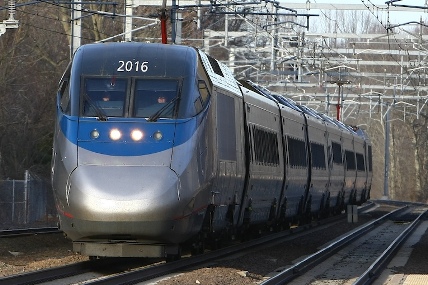TSA Not Doing Enough to Protect Railways from Terrorism, Says Sen. Lautenberg
Recalling various terrorist attacks against rail systems worldwide since 9-11 and last year's disrupted plot to attack the New York City subway system, Sen. Frank Lautenberg (D-NJ) said yesterday that the United States must do more to protect its railways from terrorism.
"Make no mistake: although these attacks occurred overseas—our rail systems here are terrorist targets," said Lautenberg, chairing a Senate hearing on rail security.
In September, the FBI broke up Najibullah Zazi's plot to blow himself up in a "martyrdom operation" inside the New York City subway system. Zazi has sincepled guilty to various terrorism-related charges in what Attorney General Eric Holder called one of the most serious threats since 9-11. But the attack most on lawmakers and witnesses' minds was last month's twin suicide bombings carried out by two women inside the Moscow subway system, murdering 40 and wounding more than 60.
John O'Connor, chief of the Amtrak Police Department, told lawmakers that terrorists would likely attack surface transportation by either detonating an improvised explosive device or shooting up a train or a train station (.pdf).
"The pattern is unmistakable," he testified. "IEDs were used to attack trains in Madrid in 2004, London in 2005, Mumbai in 2006, and Moscow on several occasions.... Active shooters attacked a station in Mumbai in 2008, in each case with tremendous loss of life."
Lautenberg said the Zazi plot and previous attacks worldwide demonstrate that the Transportation Security Administration (TSA), the Department of Homeland Security (DHS) agency responsible for securing U.S. transportation systems, cannot exclusively focus on aviation security to the detriment of rail security—a criticism seconded by Sen. Kay Bailey Hutchinson (R-TX). "Currently, the budget for surface transportation security is just $110 million, a little over 2% of TSA's total budget, a level of funding far from commensurate with the level of risk," she said.
The surface transportation system, however, is much more than passenger rail and includes freight rail, bridges, tunnels, and pipelines. The ability of the TSA to protect such a vast, open network is daunting when the department's resources go disproportionately to aviation security, said Stephen M. Lord, director of homeland security and justice issues at the Government Accountability Office.
"In the 2011 budget request for the Department of Homeland Security's Transportation Security Administration, $137.6 million of the $8.2 billion total request is for surface transportation security," he said, "while $6.5 billion is requested for aviation security, including the Federal Air Marshal Service."
David Heyman, assistant secretary for policy at DHS, says the main way DHSsupports surface transportation security is through grant awards (.pdf).
"In fiscal year 2009, DHS directed more than $500 million to mass transit and passenger rial agencies through the Transportation Security Grant Program," he testified. "$ 78 million in American Recovery and Reinvestment Act funding went to approximately 240 new law enforcement officers at 15 transit systems across the country."
Both Lautenberg and Hutchinson criticized DHS, specifically TSA, for not doing more and missing important deadlines set by the 9-11 Act. Lautenberg directly challenged Heyman on when a comprehensive risk assessment and national security strategy for the nation's rail system will be completed.
"This was due last year, and I'm asking you, I hope for the last time, when the department will complete this long overdue risk assessment," Lautenberg asked Heyman.
"The risk assessment is in interagency review right now and should be coming to Congress after that review is complete," Heyman replied.
Lautenberg called the delays "outrageous" and said he was "dissatisfied" with Heyman's responses.
At Amtrak, O'Connor told lawmakers the government-owned corporation has doubled the number of its bomb-sniffing canine teams, initiated a random baggage screening program, and teamed up with the TSA to provide a visible and uniformed security presence at stations nationwide to better protect Amtrak's 500-plus stations and 21,100 miles of track.
Acting Chief of Police of New Jersey Transit Joseph Kelly testified that his commuter railroad has installed surveillance cameras and deployed radiological and explosives detection systems, some of which were purchased with federal grants.
Kelly urged Congress to continue to support NJ Transit's security programs (.pdf).
"Since FY07, NJ Transit has received much needed operating support for security efforts," he said. "The police officers funded by these grants will be completely dedicated to counter-terror and will be a critical component to our prevention efforts."
This report was written based off of publicly available testimonies and the hearing video supplied by the Senate Committee on Commerce, Science, and Transportation
